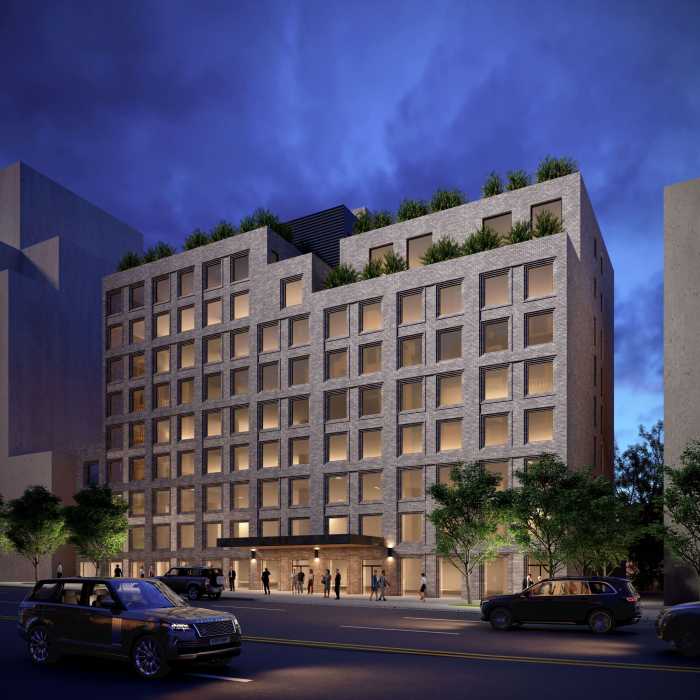Prospect Heights community board members pushed back against a developer’s plans to construct a residential building housing 316 apartments — roughly 95 of which would be below-market-rate — because, they claim, the neighborhood is “swimming in density.”
“There is no reason to add density to a neighborhood like Prospect Heights that is absolutely swimming in density,” said Elaine Weinstein during a March 4 meeting of Community Board 8’s land use committee. “We cannot walk on our streets anymore. The amount of traffic, garbage, is uncontrollable, and therefore it seems unrealistic to build this building as large, as high, as dense as you are proposing.”
The lot at the corner of Vanderbilt and Atlantic avenues currently features a drive-through McDonald’s, but developer Vanderbilt Atlantic Holdings wants a rezoning to allow them to build their proposed 18-story apartment building — which provoked outrage from board members because of its height and potential to increase the neighborhood’s population.
Contrary to the locals’ claims of abnormal density in the neighborhood, however, Prospect Heights features around 83.6 people per acre of land, making it just 67.5 percent as dense as neighboring Crown Heights, and comparably dense to nearby Park Slope.
In fact, much of the density that does exist in the area comes from the Pacific Park megadevelopment, an in-progress multi-tower mixed-use project that includes the Barclays Center and several towers near the heavily commercial Atlantic Center. The rest of the neighborhood is mainly low-scale brownstones and walk-up apartment buildings.
Representatives for Vanderbilt Atlantic Holdings argued that the positioning of the lot — situated at the corner of a four-lane road and a six-lane road, just two blocks from Barclays Center — actually makes it the perfect location to absorb a high-density development.
“If there’s anywhere in the neighborhood that density belongs, it’s right here,” said land-use attorney Benjamin Stark.

The Chair of Community Board 8 acknowledged that much of the area could stand to increase in vertical size, but countered that, just because the site can handle a large density project, doesn’t mean it should.
“You’ve got the two wide streets, and you have an abutting neighborhood that’s still relatively low-density and livable,” said Ethel Tyus. “So just because you can build higher and denser because you have these two wide streets converging, doesn’t mean you should.”
Community Board members took issue with the project not conforming to the desired density of developments within the M-Crown zone, an in-the-works rezoning that seeks to allow for residential development in the industrial corridors of Crown Heights and Prospect Heights while preserving jobs and community spaces.
The M-Crown framework as currently laid out would only allow a 14-story building on the McDonalds lot. Stark argued that since it lies in the M-Crown area that allows for the most density, a taller building should be considered, especially considering its location along two extra-wide avenues.
“I do think it’s perhaps disingenuous to say that this site isn’t deserving of a density beyond that of the balance of the M-Crown area,” Stark said. “It has unique conditions that make it, from a land-use perspective, the most appropriate location for the most density.”
If built, the developer would be forced to earmark 30 percent of the building’s units as “affordable,” with rents targeted at the area’s median income. That would provide nearly 100 below-market-rate apartments toward Mayor Bill de Blasio’s goal of creating 300,000 affordable units by the end of 2026.
The board tabled the vote on the proposal for its April land-use meeting, but encouraged the developer to scale their plan down.
“It’s really just too tall and too dense,” said Tyus.
Whenever the volunteer board votes, the proposal would head to the Borough President’s office for another non-binding opinion, before heading to the City Planning Commission and the City Council for final approval.

























